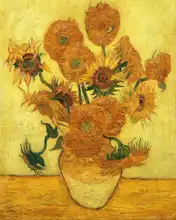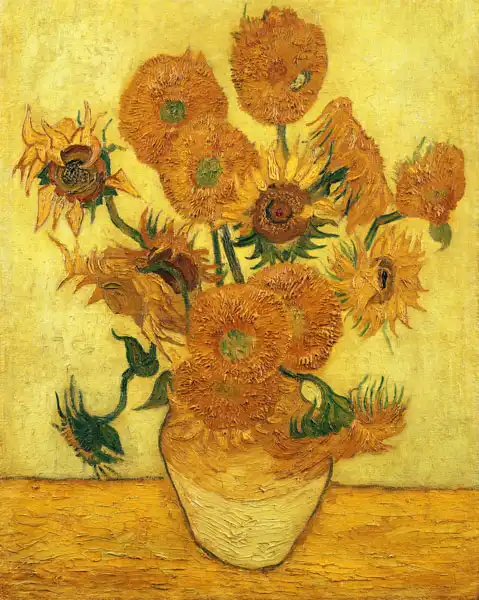About this finishing
Print. The image is printed on the top quality 10-ink HP Z9PS printer on HP matte 270 g / m2 paper. You can choose any size to an accuracy of 1 cm. A margin of 5 cm around the image is added to the size of the motif.


You can find a detailed description about our finishings
here.
Sunflower
Date:
1889Medium:
oil on canvasLocation:
private collectionSunflowers paintings Gogh painted the whole range. The first series in 1887, which caught lying sunflowers (see example of this Sunflower
). In the second series of 1888 of Arles already painted Sunflowers in a vase. This series was associated with a
Paul Gauguin because they were part of the decoration in the guest room in Arles. The first two versions of the image are dark and only the third and fourth got typical yellow color (cyan, and once again with a yellow background). To make matters worse Gogh painted in 1889, the next version, or rather copies of sunflower second series. For Gogh yellow sunflowers imagined happiness and optimism and considered the painting a great challenge ( Not everyone finds themselves enough heat to melt the gold and tones of these flowers. It takes energy and focus throughout beings). This picture is just a copy of the fourth version of the second series.
Gogh painted picture Sunflower in 1889. Prevailing color of this fine art print is yellow and its shape is portrait. This art piece is located in a private collection This image is printed on demand - you can choose material, size and finishing.
Vincent Willem van Gogh (1853-1890). Dutch painter belonging to
Post-Impressionism. His paintings (some 900 paintings and 1,100 drawings and sketches) are among the most famous in the world and are sold for exorbitant sums (except for those in our shop).
Parisian Impressionists He lived in Paris from 1886 and was influenced by the use of bright colours - most of his works were painted during this period. In his paintings, Gogh uses contrasting colours (often blue and orange - he said that I want to use colours other contrasts to each of them shone even more to contrast a man and a woman). He was known for his excesses and amputated an ear after the break-up of his friendship with
Gauguin. There is a lot of speculation about this incident (he possibly suffered from heavy metal poisoning from paint that had caused mental problems). In 1890, unfortunately he committed suicide.


